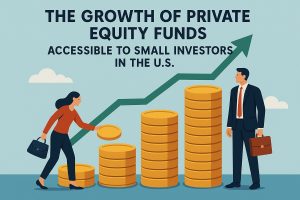Planning for retirement can often seem overwhelming due to the multitude of investment options available. One popular choice that stands out for those in the United States is using Exchange-Traded Funds, commonly known as ETFs. Incorporating them into your retirement strategy can offer several advantages.
ETFs are investment vehicles that combine the diversification of mutual funds with the trading flexibility of stocks. In this blog post, we will explore the benefits of ETFs in retirement planning, guiding you through why they might be a wise addition to your portfolio.
The benefits of ETFs in retirement portfolios

One of the primary benefits of including ETFs in retirement portfolios is their ability to provide instant diversification. Diversification is a fundamental principle in investing and entails spreading your investments across various asset classes to mitigate risk.
ETFs often track entire indices or sectors, allowing investors to access a broad range of securities with a single purchase. This means you aren’t putting all your eggs in one basket, reducing the exposure to any single investment’s failure.
Another key benefit is tax efficiency. Due to their unique structure that enables in-kind creation and redemption, ETFs generally produce fewer capital gains distributions compared to mutual funds. This tax-efficient nature can mean more of your investment returns are shielded from immediate taxation, potentially enhancing your retirement nest egg over time. With less tax obligations upfront, you have more freedom to reinvest those returns.
Cost-effectiveness of ETFs
Investing in ETFs is often more cost-effective compared to other investment vehicles, such as mutual funds. They typically come with lower expense ratios, meaning the annual fees charged for managing the fund are usually lower.
This cost advantage can be significant over a long-term horizon, like retirement planning, where every dollar in fees saved translates to more money compounding over time in your portfolio. Furthermore, the commission fees associated with buying and selling ETFs have decreased due to the rise of no-commission trading platforms.
This makes it increasingly affordable for individual investors to manage their portfolios without incurring high transaction costs. Such savings are crucial, particularly for those planning to regularly rebalance their portfolios or make small, frequent trades. The reduction in trading fees presents an added incentive to incorporate ETFs in your retirement planning.
Flexibility and transparency
The flexibility and transparency provided by ETFs are additional attractive features. Due to their design, which allows for continuous price changes throughout market hours, investors can execute trades with precision when compared to other traditional investment products. This flexibility allows investors to react more swiftly to market dynamics and seize timely opportunities without having to wait for a market closing.
ETFs offer tools that cater to varying investor needs. With access to numerous types of funds—from sectors such as technology to fixed-income bonds—investors can effectively channel their funds according to their retirement aims. This variety results in the flexibility to adjust your investments in reflection of market dynamics and personal financial objectives, ultimately contributing to a robust retirement plan.
Integrating ETFs into your retirement strategy
Integrating ETFs into your retirement blueprint requires thoughtful considerations and strategic planning. When constructing your portfolio, selecting ETFs that align with your risk tolerance, investment horizon, and retirement goals is paramount.
Assess the asset classes, sectors, or themes you want exposure to and find ETFs that match these criteria. Evaluate the performance history, expense ratios, and the reputation of the fund’s issuer to ensure your selections meet your expectations.
Lastly, consult with a financial advisor or conduct thorough research before making decisions about your investments. Professional guidance can help tailor your ETF selection precisely to your specific retirement needs, avoiding common pitfalls and maximizing potential returns. Investing in ETFs should align with your broader financial roadmap, ensuring your retirement years are both secure and enjoyable.
Risks and considerations
Despite the numerous benefits of ETFs, it’s essential to consider potential risks. While ETFs typically offer diversification, specific funds focusing on niche sectors might expose investors to concentrated risks. Always evaluate the level of exposure a particular ETF provides and ensure that it aligns with your investment objectives and risk appetite.
Lastly, liquidity risk is a factor to be aware of. While generally offering more liquidity than mutual funds, not all ETFs are highly traded. Low trading volumes can result in wider bid-ask spreads, potentially affecting the price at which you can buy or sell shares. Conduct thorough due diligence to ensure the funds you choose align with your liquidity expectations and investment strategy.
Future outlook for ETFs in retirement planning
The future of ETFs in shaping retirement planning appears promising. As more investors recognize their benefits, the number of available ETFs continues to grow further, offering even more specialized and globally diversified funds.
Continuous advancements in technology and accessibility through digital platforms also make ETFs almost indispensable in forming a modern, flexible, and diversified retirement portfolio. Retirement investors are increasingly aware of the importance of aligning their finances with personal values, such as sustainable investing.
This trend has led to the creation of a wide array of socially responsible ETFs, matching investor demand for ethical and impact-focused investments. Such developments ensure that the longevity of ETFs in retirement portfolios is not only sustainable but also ever-relevant to changing investor priorities.



